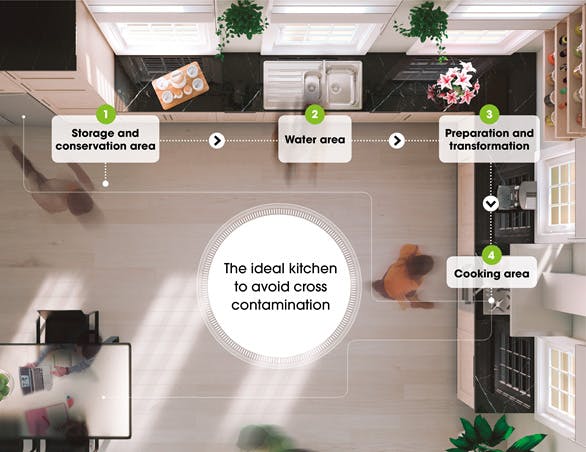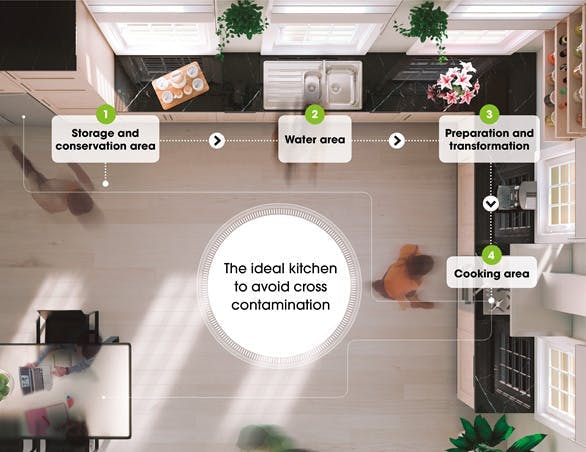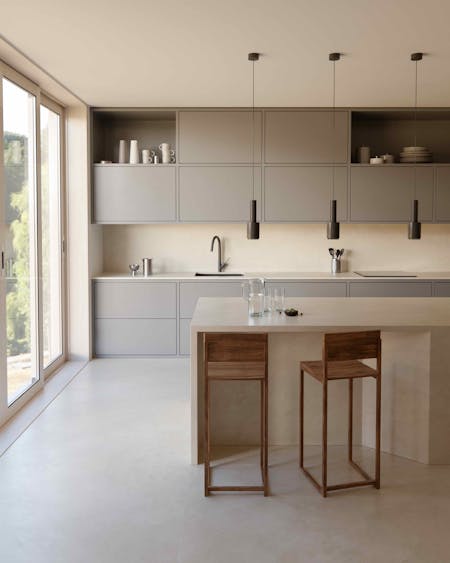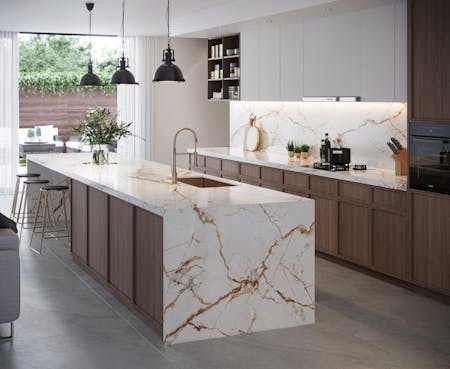
8 top tips to help avoid food infections in the kitchen
With the arrival of summer and the ongoing global health crisis affecting our day to day lives, it’s important for us to be taking extra care of our health by practicing good kitchen hygiene and making sure our kitchens are efficiently designed to do so.
Here’s our 8 top tips for designing and organising your kitchen in a way which helps to avoid cross contamination.
Cross contamination is one of the main causes of food infections, which are generally caused by the transmission of pathogenic microorganisms from a contaminated food (usually raw food) to another food that is not contaminated and does not require heating.
The «moving forward» principle helps to prevent cross contamination
In order to avoid cross contamination between foods, it is important to apply the “moving forward” principle. This is an organisation method used in restaurants, which is based on a kitchen design that encourages food to always go forward from «dirtier» areas to «cleaner» areas without backtracking. In order to help with this process, it’s a good idea to make sure a kitchen has three clearly differentiated areas – a) reception b) food storage c) preparation and transformation.
However, the available space tends to be more limited within domestic kitchens, which is why we have developed 8 top tips to help apply this principle at home:
- Follow a logical sequence of work in which all food passes sequentially from its most contaminated stage or raw state, to its final consumption stage, without having to go back to an earlier phase. If possible, allocate a small area of your kitchen counter to the raw food handling phase, ideally the area closest to the sink, and another area to place the food once it is cooked.
The recommended sequence to consider when designing a kitchen is as follows:
- Food storage and conservation area
- Wash zone
- Preparation and transformation
- Cooking area and plating
- Avoid contact between raw and cooked food, both directly and through kitchen equipment, utensils and containers. For this, make sure you thoroughly clean any equipment, such as blenders, when changing food and also use specific utensils and containers for raw food and others for cooked food.
- Avoid crossing waste and dirty utensils with food. To do this, try not to accumulate waste such as packaging or dirty utensils where food is going to be handled.
- Avoid crossing debris or dirty utensils with clean utensils.
- Avoid contact between dirty countertops or cutting boards and food, especially if they are already cooked or prepared for final consumption.
- Wash your hands after handling raw food, especially if you are then going to handle food that is already cooked or ready to eat.
- Avoid using dirty kitchen towels or using single-use kitchen paper.
- Place cooked or ready-to-eat foods in the refrigerator on the upper shelves, and raw foods such as meat and fish on the lower shelves.
Cross contamination can happen while preparing food, cooking food, storing it, or by using utensils incorrectly, so it’s important to correctly handle food and equipment to minimise the risks to our health.
Silestone Institute: is an international platform dedicated to researching and disseminating knowledge about the kitchen space, both domestically and professionally. The Institute is an initiative promoted by the Cosentino Group, a world leader in the production and distribution of cutting-edge innovative surfaces for architecture and design.





